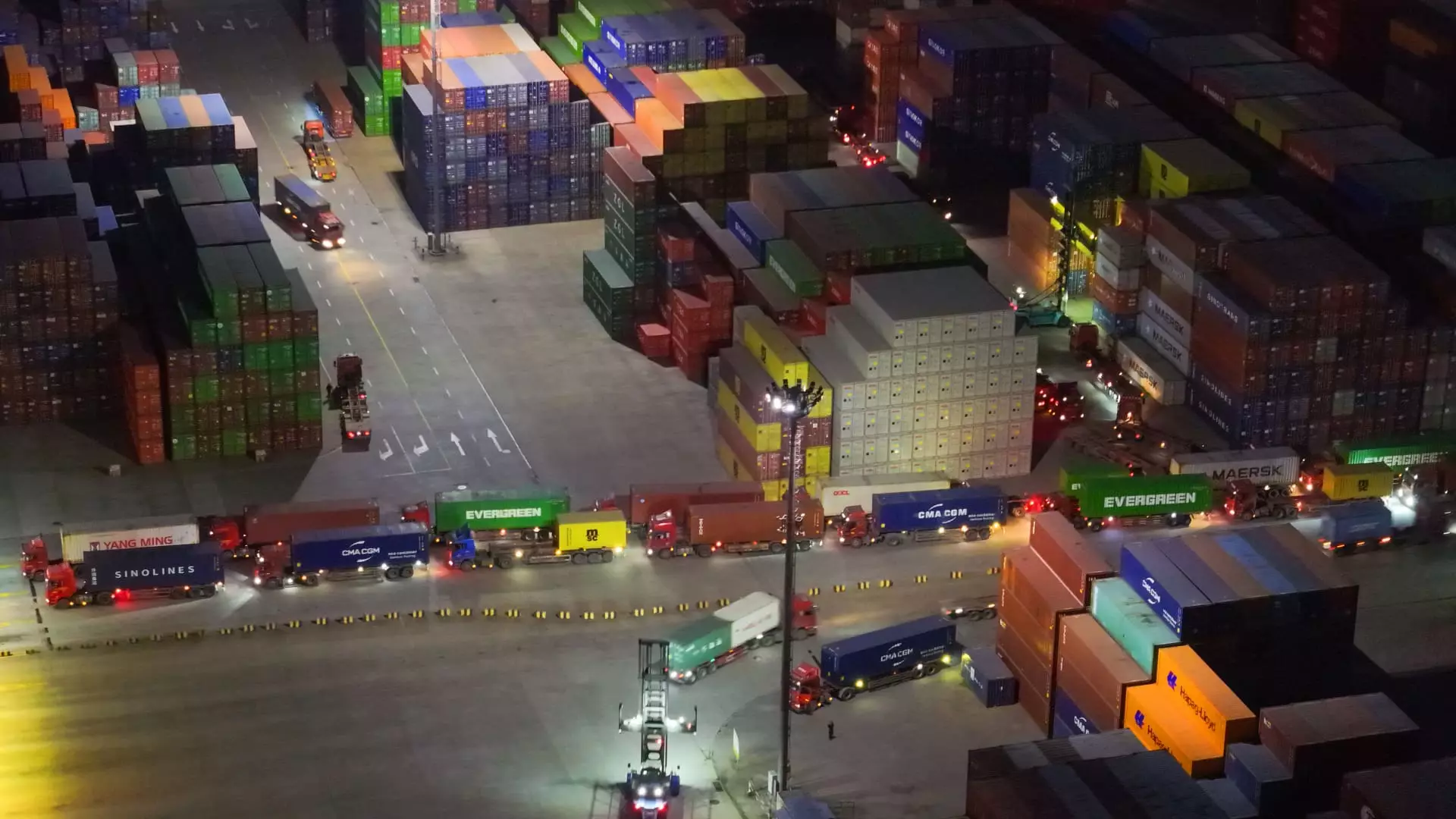In a sobering revelation, major investment firms such as Citi and Natixis have significantly downgraded their projections for China’s economic growth, marking a crucial turning point in the ongoing economic climate. The revisions are primarily driven by escalating trade tensions with the United States, leading one to ponder if we are witnessing the deterioration of a once-shining economic powerhouse. With Citi reducing its forecast for China’s GDP growth from an already modest 4.7% to an alarming 4.2%, and Natixis following suit, it begs the question: how did it come to this?
Uncertainties loom large over the negotiations between the U.S. and China. The past week saw a steep increase in tariffs, more than doubling in number, which showcases an alarming escalation of hostilities. Economic pundits view this as not merely a slap on tariffs but rather a gaping wound that could hinder growth for years to come. While data released in the coming months will further illustrate China’s economic condition, the immediate outlook looks precarious, and the analysts seem to agree on one point: reconciliation appears improbable.
The Cost of Retaliation
When U.S. President Trump announces tariff hikes that amount to a whopping 50% increase on Chinese imports, the repercussion is inevitably felt on the ground. The intricate interdependency between the two nations means that China’s economy is at the mercy of U.S. policy directives. Analysts at Goldman Sachs projected that even a modest increase in tariffs could slice up to 1.5 percentage points off China’s GDP. This further illustrates how economic policy, seemingly stretches of paper enacted at a distance, have cascaded effects that can ripple right through to the everyday citizen in China.
The Chinese government’s reaction to escalating trade tensions has shown a dual strategy: delivering retaliatory tariffs while simultaneously looking for avenues to bolster its economy. This is a delicate balancing act, and one that may not sustain itself for long without causing significant repercussions to its populace. Many economists, like Guotai Junan International’s Hao Zhou, warn of rising uncertainties that cloud future growth, illustrating just how fragile the foundation of economic partnerships can become under duress.
Declining Exports and Increased Fiscal Pressure
China’s export shoulders roughly 3 percentage points of its GDP, according to Goldman Sachs. With firms like Nomura predicting a 2% drop in exports this year—a stark revision from their initial steady projections—the implications extend beyond mere numbers. The erosion in exports could signal profound vulnerabilities within China’s manufacturing sector, which, until now, had benefitted from a golden age of global economic exchanges.
Faced with these declining trends, China is reportedly preparing to employ measures such as cutting interest rates and increasing fiscal spending. While these strategies might provide short-term relief, they also suggest a looming desperation in the face of worsening trade relations. Decisions taken in Beijing are not simply economic, they’re also political—each move calculated to retain both domestic stability and international standing. However, they carry significant risks, potentially exacerbating the economic chasm that the nation finds itself in.
Unraveling the Tensions Ahead
What makes this economic crisis particularly distressing is the unpredictable nature of retaliatory politics. The notion that U.S.-China relations could exert a far more severe economic stranglehold is both ominous and disconcerting. As Yue Su from the Economist Intelligence Unit puts it, the strategic ramifications of retaliatory policies could outweigh economic costs, indicating that the stakes are not just fiscal—they’re existential.
The harsh reality is that the ongoing trade war reveals deeper systemic issues within both economies that are often overlooked in populist discussions. It’s not just about tariffs; it’s about the very framework of how global economies interconnect, thrive, or falter. As we stand at this precarious junction, the dialogue over trade must shift from punitive measures to sustainable solutions, lest we find ourselves in a cycle of retaliatory losses with no clear exit strategy.

Leave a Reply